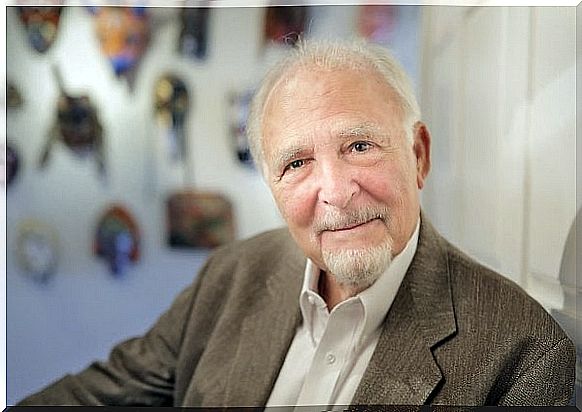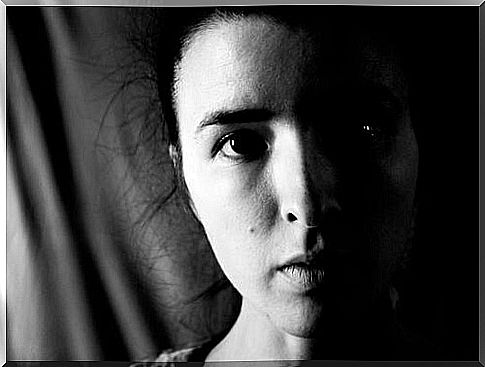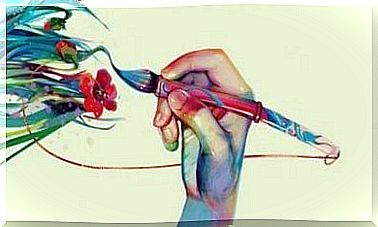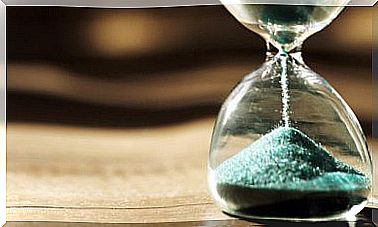Micro Expressions According To Paul Ekman

Paul Ekman is one of the most influential and important psychologists of the 21st century , according to the American Psychological Association (APA) . He is a leader in lie detection and the relationship between emotions and facial expressions. In addition, he has helped to discover micro-expressions.
In this article we explain what these are, what they look like, and why they are important.
Ekman says we show micro-expressions during a conversation. These usually go completely unnoticed by the potential recipient. They are very short facial movements, uncontrolled by the person. They represent different emotions, which we discuss below.
From facts to theory
Paul Ekman is one of the few who knows best how real emotions are painted on our faces.
After years of publications on emotional characteristics, he secured funding for a project that became the turning point of his career. This endorsement helped him to study, on the spot and in depth, the origins of emotions in more than twenty cultures.
His results enabled him to establish his best-known generalization: emotions are not cultural, but biological. Therefore, they are universal and the result of genetic expression.
Thanks to these genes , certain muscle groups of the face contract at the same time. They follow a certain pattern depending on the emotional state the person is in.
When you’re happy, you’ll make very different moves than when you’re overwhelmed with fear. This idea in turn gave rise to two other ideas.

Micro-expressions: universal and bound to emotions
The first idea is that micro-expressions happen in the same way in all people. That is, all people, regardless of their culture, their development, the way they were raised or how they spent their childhood, open their mouths to express surprise, for example.
The second idea is that there is a group of universal emotions that are closely tied to these small gestures. A small smile, a quick eyebrow raise, a sudden movement of the nose…
They are all minor variations in the muscles of the face. They are practically imperceptible and involuntary. In most cases, they are a reflection of our emotions.
So there are well-defined emotions and a predetermined way to express them. Therefore, Ekman’s central idea is that it is perfectly plausible that other people can recognize them, understand them, and even use them for certain purposes.
Micro-expressions that represent emotions
We need emotions to make decisions, communicate, understand others and ensure the transmission of our genes. With this in mind, Ekman has identified up to 10,000 different expressions.
In 1978 he and Wallace Friesen classified them in his Facial Action Coding System ( FACS ), based on the anatomy of the facial muscles.
Can you tell what emotion someone feels when they wrinkle their nose? Could you tell if someone is scared just by looking that person in the eye?
Let’s take a look at the micro-expressions that correspond to these 6 universal emotions:
- Happiness: Pulling up the cheeks. The corners of the mouth are pulled back and lifted. Wrinkles on the skin under the lower eyelid. Wrinkles between nose and upper lip and in the outer part of the eyes.
- Dislike: Raised upper lip. Generally asymmetrical. Wrinkles on the nose and areas near the upper lip. Wrinkles on the forehead. Lifting of the cheeks wrinkling the lower eyelids.
- Anger: Low eyebrows, drawn together and angled. Tight lower eyelid. The lips are tense or open as in a scream. Prominent look.
- Anxiety: Raising and contracting the eyebrows. Raised upper and lower eyelids. Tight lips. Sometimes the mouth is open.
- Surprise: Eyebrows raised, in a circular position. Tight skin under the eyebrows. Open eyelids (top up and bottom down). Jaw down.
- sadness. Outer of the eyes down: Outer of the eyes angled down. Skin of the eyebrows in the shape of a triangle. Corners of lips down, lips may even tremble.

Learn to spot lies within 32 hours
Paul Ekman says the most common reason people lie is to avoid breaking a rule. He believes that micro-expressions can help us detect the lies others are trying to make us believe.
These micro-movements last 1/25th of a second. If a human eye is not trained, the expression is imperceptible. To demonstrate this, the psychologist decided to test about 15,000 people. He showed that 99% of the participants could not perceive them.
From there, he began to draw attention to the potential consequences of being able to read these microexpressions. That’s why he started giving workshops on how to detect liars and discover the micro-expressions that give them away.
Most surprisingly, he assures us that it is possible to detect lies in just 32 hours!
The key is identifying the variations and dissonances in a person’s normal behavior. For example, if someone affirms something and lifts his or her shoulders slightly at the same time, he or she is probably telling a lie. The same is true if they scratch their nose or move their head to the side.
However, nothing is 100% reliable. There is always a small margin of error. As the writer Roberto Espinosa points out, reliability depends more on the person analyzing than on the person gesticulating. It is said that there are no bad liars, only good experts.
Micro expressions are automatic
When it comes to detecting microexpressions, it helps that they are automatic. That is, they cannot be completely hidden or masked. While you can try to hide them for a while, it’s virtually impossible to do this all the time.
Even the most deceitful liars are unable to control their unconscious indefinitely. Sooner or later they end up exposing themselves to the trained eye.
And while training is essential to deciphering micro-expressions, it’s not always easy. In practice, detecting it means paying close attention to the person. You actually have to stare at them and observe them from a distance. This can be inconvenient for the person being evaluated.
In addition, sometimes ‘informational sound’ also influences us. This masks our gestures. That is why it is sometimes necessary to deploy a specialized team to record the observations.

Through training we develop skills
According to Paul Ekman, training in micro-expression discovery can help us develop certain social and emotional skills. These skills include emotional intelligence and empathy, as well as better emotional management.
Identifying these little expressions quickly and skillfully helps us recognize certain behaviors and appreciate the feelings of others. It also helps us to be more aware of and express our own emotions more accurately, increasing the likelihood that others will understand us.









